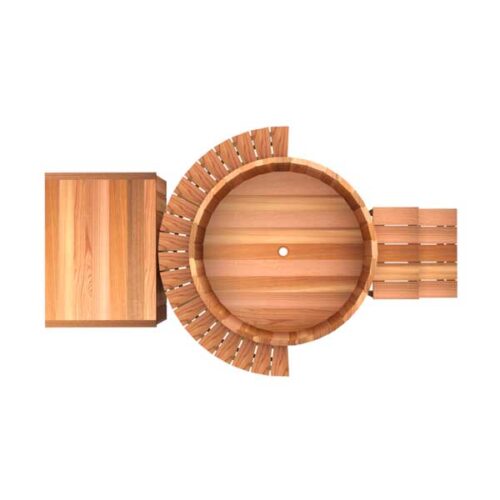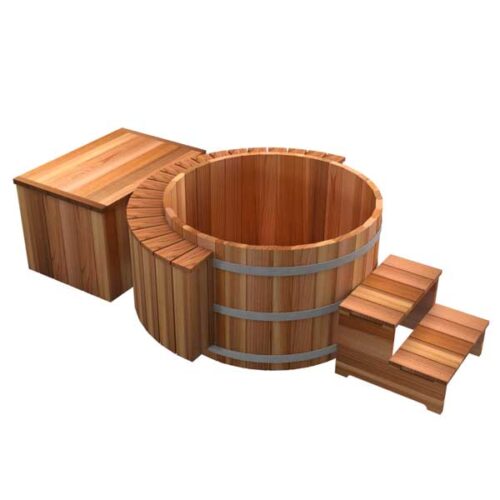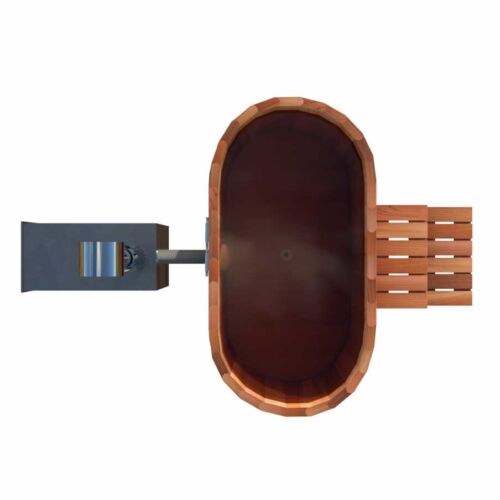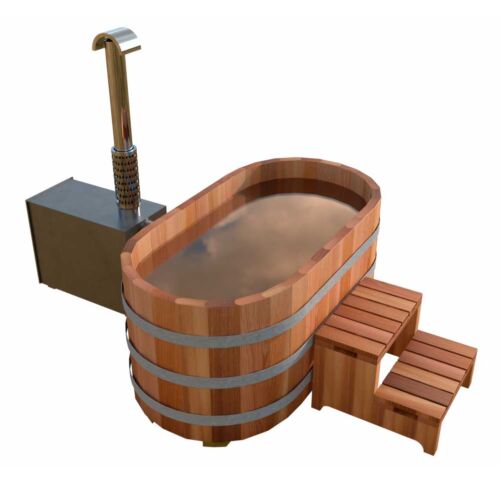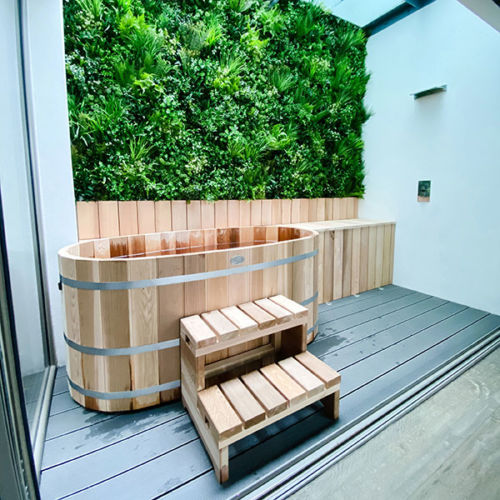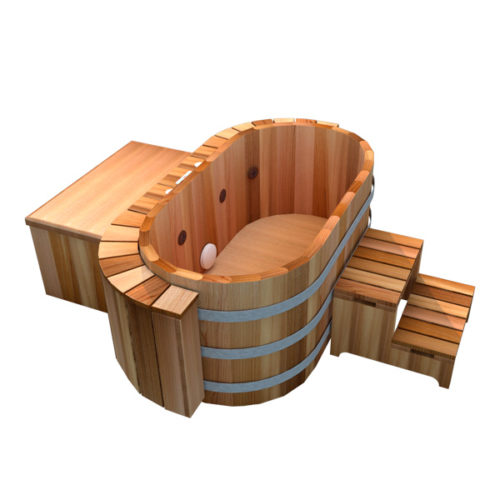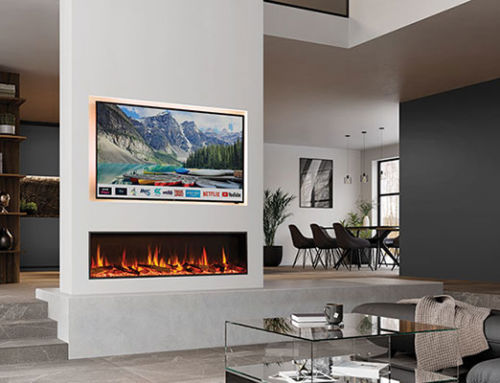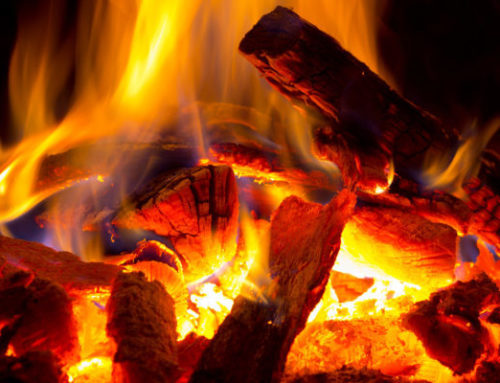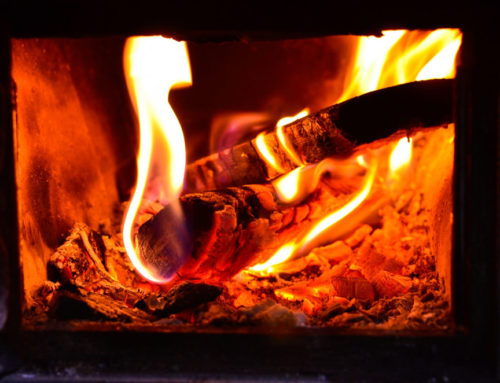What type of outdoor heating do I need?
Outdoor Patio Heaters
The afternoons seem all too short when one is having a great garden party, don’t they? How about extending them well into the night without having to flee indoors for warmth or having to wrap up in a bundle of blankets? A good quality patio heater will prolong your cosy evenings to relax outdoors with friends and enjoy the pleasures of al fresco dining in a comfortable, pleasant atmosphere.
Unlike an indoor space heater that warms the air around it, an outdoor heater emits infrared waves that are directly absorbed by any object, such as the human body. The concept is simple, but the effect is astounding.
There is a myriad of outdoor patio heaters on the market, in a variety of shapes and sizes, fuel types, different methods of spreading the heat, the choice of portable, table-top, built-in or suspended heaters, and much more. Finding the right patio heater might prove quite a challenge if one has not done thorough research.
This article attempts to guide you through all the choices to help you find one that best suits your needs, with a specific focus on the two most common outdoor heaters: radiant gas and infrared electrical heaters.
Gas Outdoor Patio Heaters
Gas heaters are probably the best-known free-standing, portable patio or garden heaters, as they have been around for a long time. They can be set up almost anywhere, and the compact models do not require any installation.
How does a gas outdoor patio heater work?
Gas outdoor patio heaters use radiant heat to warm outdoor areas. It is a much more focused heat than convection or conduction, transferring the heat directly from the radiant panel to an object in front of it, in the form of electromagnetic radiation waves. This means radiant heaters do not warm the space around the heater, but rather directly warms the object that the heatwaves reach. In other words, it will directly warm your body, the seats you sit on, and so on, rather than the air around the heater. For outdoors heating, this is far more effective than attempting to warm the entire space of your patio or backyard.
What are the benefits of gas patio heaters?
A patio heater will undoubtedly improve the quality of your outdoor entertainment on colder days or in the evenings. They are cheap to buy, versatile and easy to use.
Gas patio heaters using either natural gas or liquid propane gas (LPG) are easy and convenient to install and use. Natural gas patio heaters can be directly linked up to your home’s natural gas line, meaning that refuelling is never an issue. LPG patio heaters are much more portable, as they attached to a gas cylinder (usually situated in the base of the heater) and can easily be moved around to your patio, deck, poolside or conversation pit in the garden. Most LPG patio heaters will have wheels or castors fitted to the base to make it even easier to move them.
Gas outdoor heaters are easy to operate. Most models have a control know and battery-powered igniter. The heat output is easily controlled, with top-end models producing as much as 40 000 BTU.
Gas patio heaters are economical to operate. It is estimated that it can run at full power for at least 10 hours on a 20 lb cylinder. The heat is instantaneous, and no warm-up period is required.
LPG outdoor heaters are incredibly versatile as they are not limited by fixed energy sources such as electrical outlets, or even electricity supply. They can be used anywhere and can also be transported to your campsite, or cabin without electricity.
Gas patio heaters are safe to use and environmentally friendly. Both natural gas and LPG are clean-burning, with minimal emissions and high levels of energy efficiency. A distinctive odour is added to the gas so leaks can be easily detected. Naturally, safety precautions need to be taken, especially with children around, so there are no gas leaks, the patio heater is not knocked over, and hot parts are not touched.
What are the design possibilities with gas outdoor patio heaters?
Gas patio heaters are available in a wide array of styles to suit every outdoor entertainment area, from patios, to pool areas, open gazebos and outdoor bar areas. To offer you endless design possibilities, they come in models suspended from the ceiling or mounted on the wall, or table-top models, or free-standing models.
The most common design is a dome-shaped heater which usually radiates the heat down and outward, in a circle around the heater. Wall-mounted patio heaters work in the same way as dome-shaped patio heaters, but they are usually almost flat and radiate the heat at a slightly acute angle right in front of the heating panel.
LPG models are portable and can be moved around or stored out of the way when not needed. Natural gas models are more permanent, and you would need to plan for multiple outlets on your home’s natural gas line.
What are the limitations of a gas outdoor patio heater?
Because outdoor heaters do not heat the space around them, you should not expect the atmospheric warmth generated by an indoor fireplace. They are meant to improve the quality of your outdoor entertainment, by warming the guests and objects around them.
The range of the heat radiation is limited, and you cannot expect one heater to provide sufficient heat for the entire backyard. Usually, they are best placed with people sitting or standing around, or in front of them.
The bottom line is, choose the shape and design of heater best suited to the particular size and shape of the space where you entertain.
Electric Infrared Outdoor Patio Heaters
Modern technology has vastly expanded the range of options to effectively heat areas for entertaining outdoors. One such development is the electric infrared outdoor patio heater. These heaters are incredibly efficient and are available in models that are mounted to the wall, suspended from the ceiling, placed on table-tops, or free-standing.
How does an infrared outdoor patio heater work?
Infrared heaters transmit their heat energy to objects in an extremely efficient manner, much like the sun does. Think about standing in the shade on a sunny day – the ambient temperature might still be cool, or even cold. Moving into the sunlight almost instantly makes you feel warmer, even though the ambient temperature is still the same. The reason is that the infrared rays of the sun directly heat objects they come into contact with.
Standing near an electric infrared heater has much the same effect. Because of that, if you were to stand directly in line with the infrared rays from an infrared outdoor patio heater, you will be warmed even on a cold night.
What are the benefits of an infrared outdoor patio heater?
Infrared outdoor patio heaters are incredibly energy-efficient. Because they do not have to heat the air around them, all the heat energy is focused on the person or object in the path of the infrared rays. The heat is instantaneous, and no energy is wasted on warming up space around them first. It is estimated that infrared heaters would use only about 40% of the electricity required by a convection heater for the same effect, bearing in mind that the scope of heat is very different.
The light bulbs/tubes emitting the infrared heat typically last about 4000 hours, having to be replaced only after every two to three years of regular use.
Powerful models with energy output from 400 watts up to 6000 watts are available. For larger areas, the heaters with high energy output can be used, or smaller models can be used in designed grids or patterns.
Infrared outdoor patio heaters are safe to use. Because they do not heat up to the extent that a conventional heater does, there is very little (if any) fire hazard, even in an enclosed space. The infrared rays do not harm the environment, and the heat will not damage plants, provided they are not placed too close to them and thus overheat the plant.
They are convenient and easy to use. Many of the models come with remote controls and can be switched on and off and regulated, with the press of a button.
Electric infrared heaters are extremely versatile and can be used indoors as well as outdoors. Special designs are available for bathrooms and pool areas.
What are the design possibilities of an infrared outdoor patio heater?
Amazingly, infrared patio heater models are available that can be fitted inside a parasol! Imagine using your parasol on the patio during the day for shade, and in the evenings for warmth!
This is just one example of the innovation and design possibilities. Models are available that can be suspended from the ceiling or beams on your patio, thus covering a large area and providing light at the same time. Or you can integrate a wall model into the décor of your patio or entertainment room. Free-standing models in various designs, shapes and sizes can adorn any outdoor area to suit your taste and needs.
What are the limitations of an infrared outdoor patio heater?
One must remember that infrared outdoor heaters do not warm the air around it. You will feel warm if you are in a direct line of the heat, but will feel the cold if you move outside that line.
Most limitations can, however, be overcome with careful planning and design outlay. On patios, decks or pool areas, multiple heaters can be positioned on table-tops, against the walls, or suspended in a grid pattern to cover an area as large as you wish. You will, of course, require a sufficient number of electrical outlets and safe connections to each heater. It is strongly recommended that you consult a qualified electrician if you are going to use these heaters in a grid or other pattern, to ensure electrical safety and to prevent an overload.
Elsewhere in the garden, you will need a safe electrical outlet or extension to plug in the infrared outdoor heater, or more than one if you so desire. Care must be taken that people do not trip on extension cables.
For indoor use, electrical infrared heaters will not be a viable option as a primary heating source, unless you were to place one in every room., which in turn defeats the object of economy
Are infrared heaters hazardous to our health?
While some electromagnetic waves, such as microwaves, ultraviolet rays and X-rays are potentially harmful to the human body, not all forms are dangerous. The infrared rays generated by electrical infrared heaters are not harmful.
It is essential to distinguish between the types of infrared heat. Commonly called “near-infrared” and “far-infrared” these two types are very different in their effect on the human body, even though the term “infrared” is used in both cases.
“Near-infrared” is more intense and penetrating and is used mostly in medical devices. “Far-infrared” is mainly a light source, used to generate heat and does not penetrate the body.
Other great benefits of infrared heaters.
For enclosed, or poorly ventilated, areas such as garages, basements, home workshops, bathrooms, etc. infrared heaters stand out above any other form of heating in terms of health and safety.
Infrared heaters do not get as hot as electric space heaters, reducing the risk of fire and injury. They do not affect the quality of air in the same way as other electric or gas heaters, and you can circulate fresh air because the warmth is not dependent on heating the air. Infrared heaters thus provide the same comfort, without some of the attendant dangers.
Ask the experts
Firehouse can provide in all your heating needs and stock all the top brands of outdoor heaters. Our heating specialists can give you the best advice and products.


